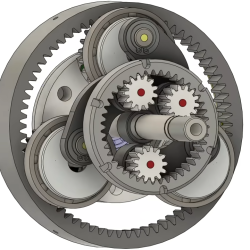For whatever reason, certain pieces of technology can have a difficult time interacting with the physical world. Anyone who has ever used a printer or copier can attest to this, as can anyone whose robot vacuum failed to detect certain types of non-vacuumable waste in their path, making a simple problem much worse. Farm equipment often falls into this category as well, where often complex machinery needs an inordinate amount of maintenance and repair just to operate normally. Wood chippers specifically seem to always get jammed or not work at all, so [Homemade Inventions] took a shot at building one on their own.
To build this screw-based wood chipper, the first thing to fabricate is the screw mechanism itself. A number of circles of thick steel were cut out and then shaped into pieces resembling large lock washers. These were then installed on a shaft and welded end-to-end, creating the helical screw mechanism. With the “threads” of the screw sharpened it is placed into a cylinder with a port cut out to feed the wood into. Powering the screw is a 3 kW electric motor paired with a custom 7:1 gearbox, spinning the screw at around 200 rpm. With that, [Homemade Inventions] has been able to easily chip branches up to 5 centimeters thick, and theorizes that it could chip branches even thicker than that.
Of course, wood chippers are among the more dangerous tools that are easily available to anyone with enough money to buy one or enough skill to build one, along with chainsaws, angle grinders, and table saws, so make sure to take appropriate safety precautions when using or building any of these things. Of course, knowing the dangers of these tools have led to people attempting to make safer versions like this self-propelled chainsaw mill or the semi-controversial table saw safety standard.
Thanks to [Keith] for the tip!




















